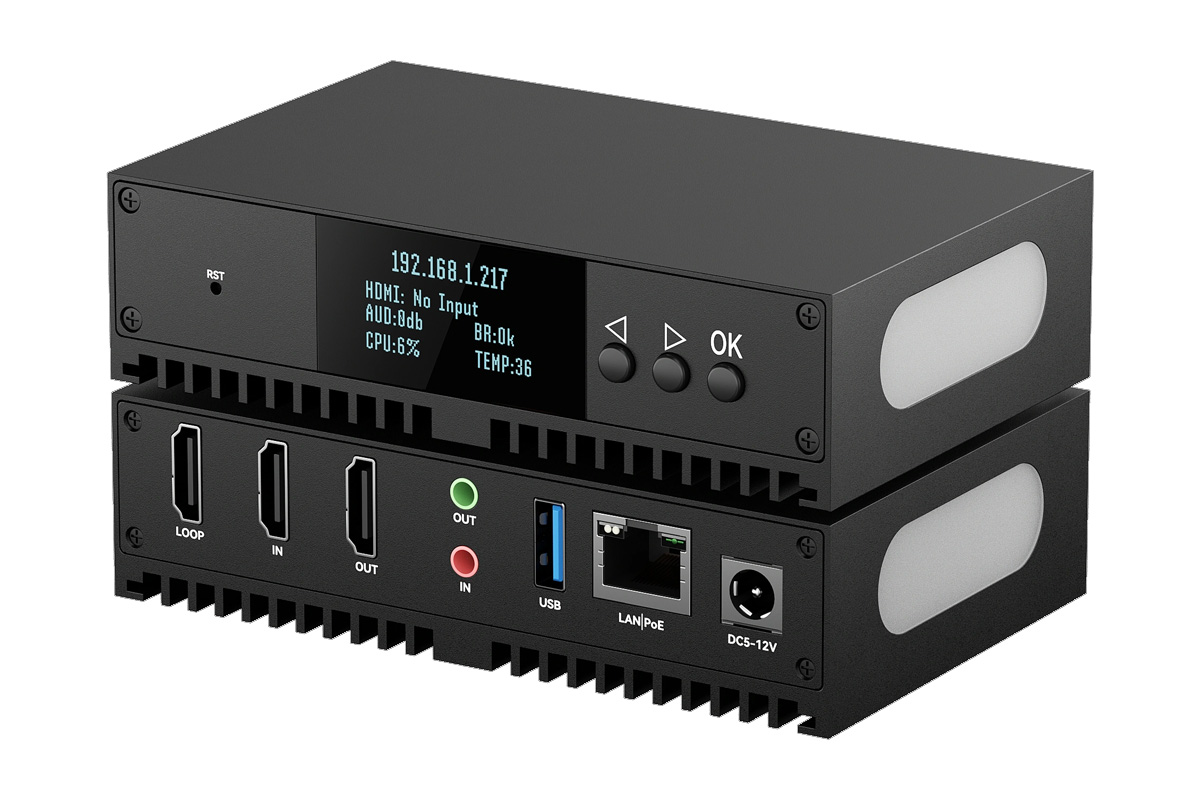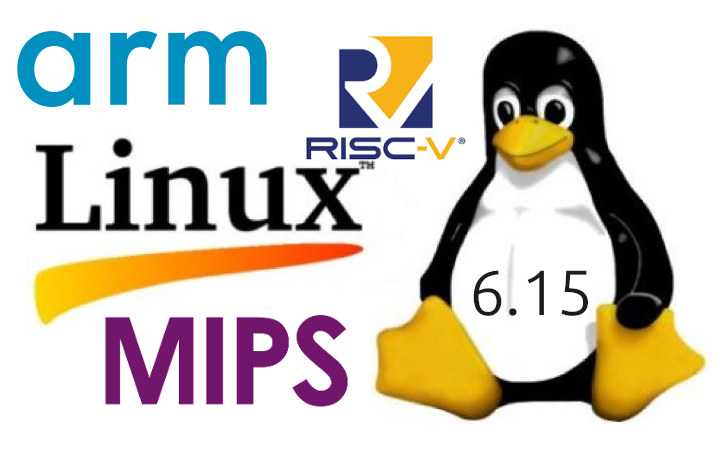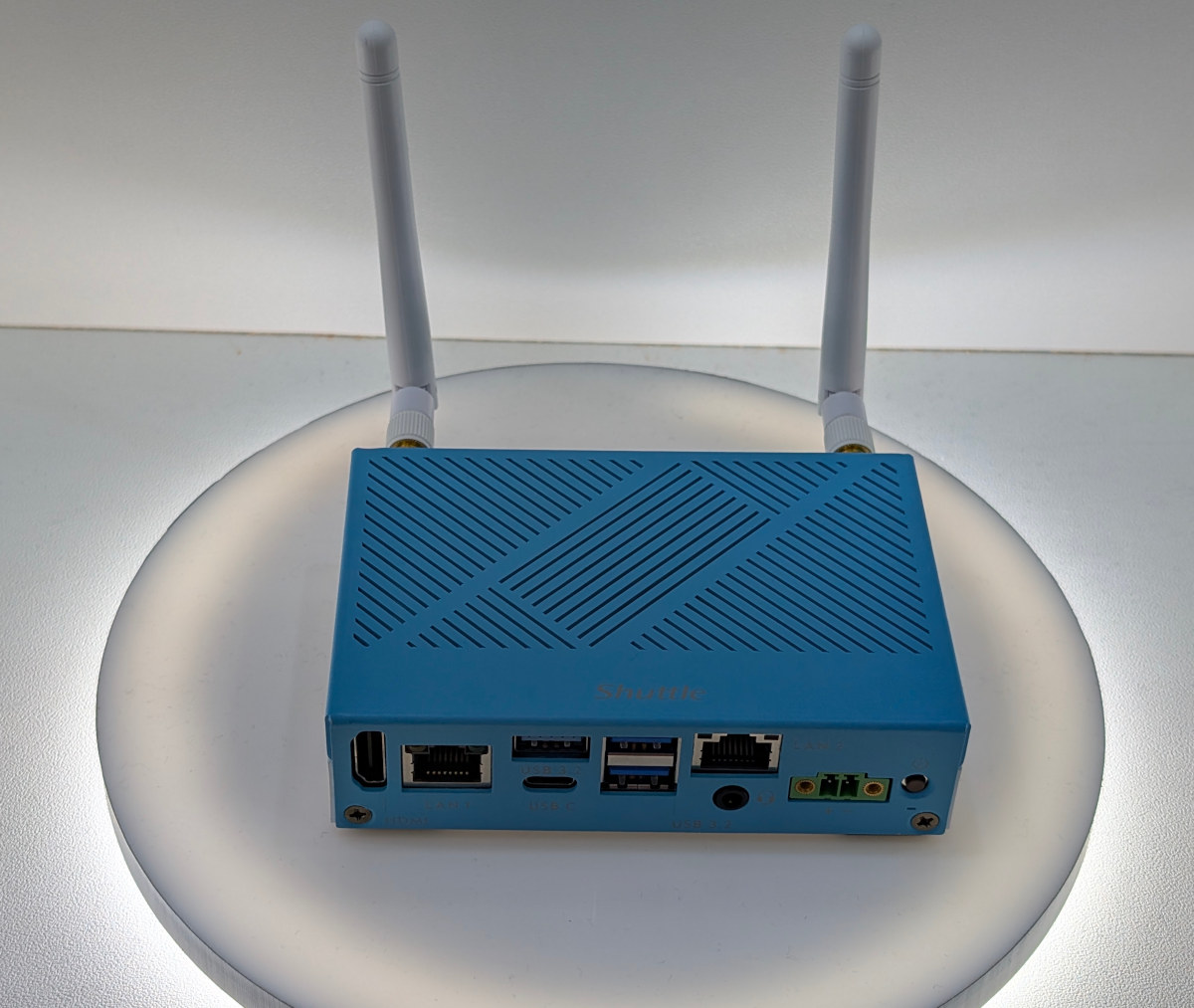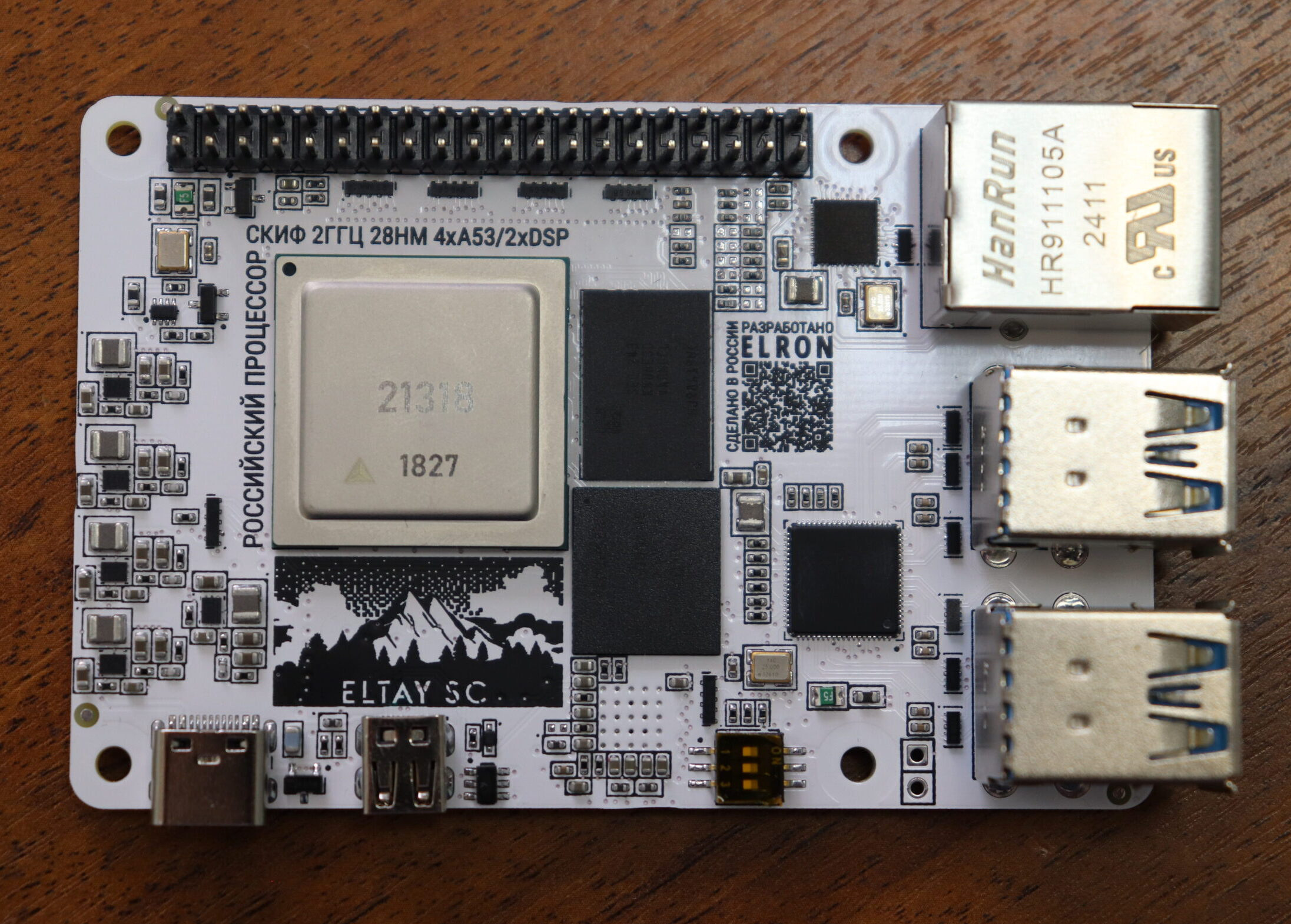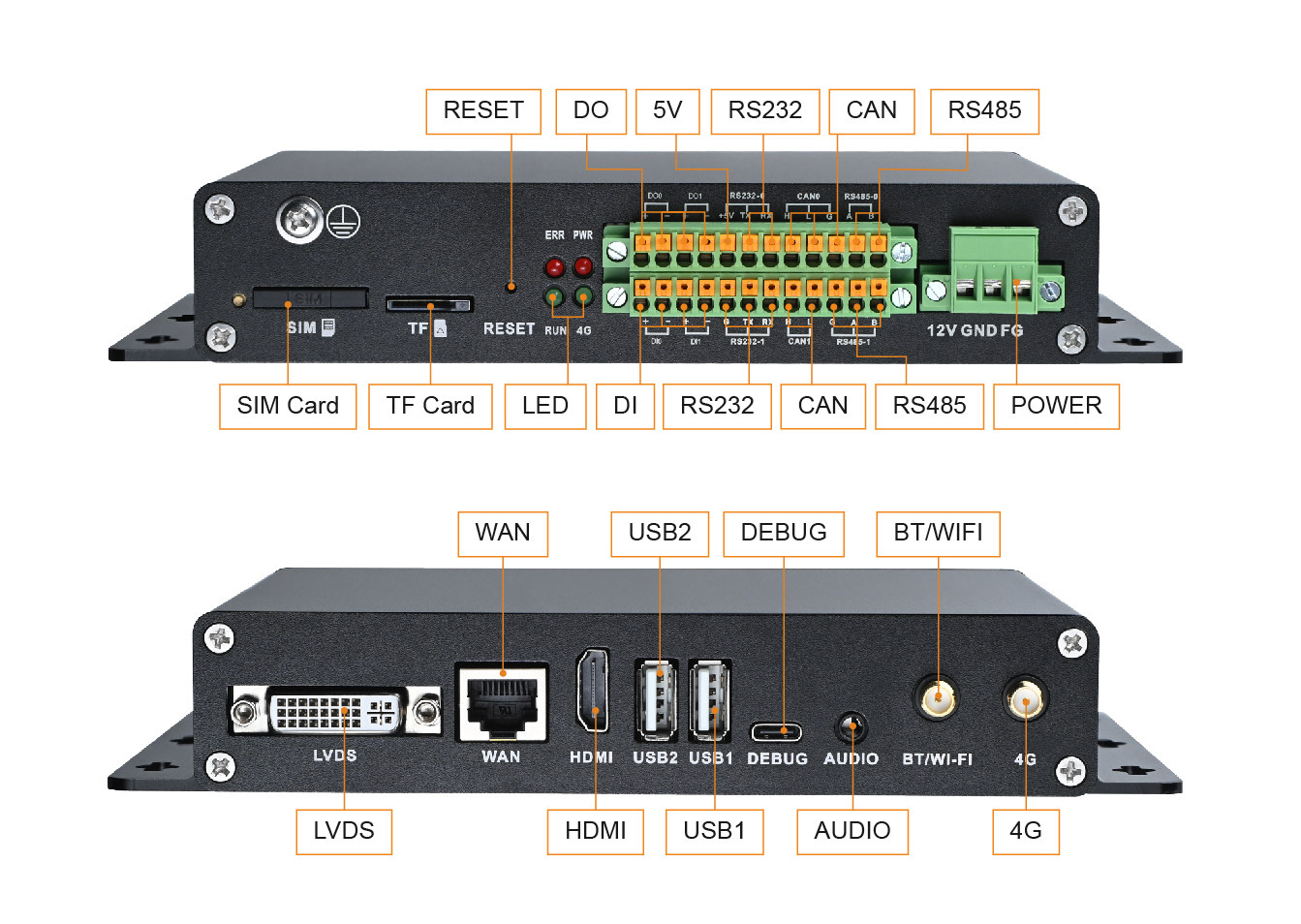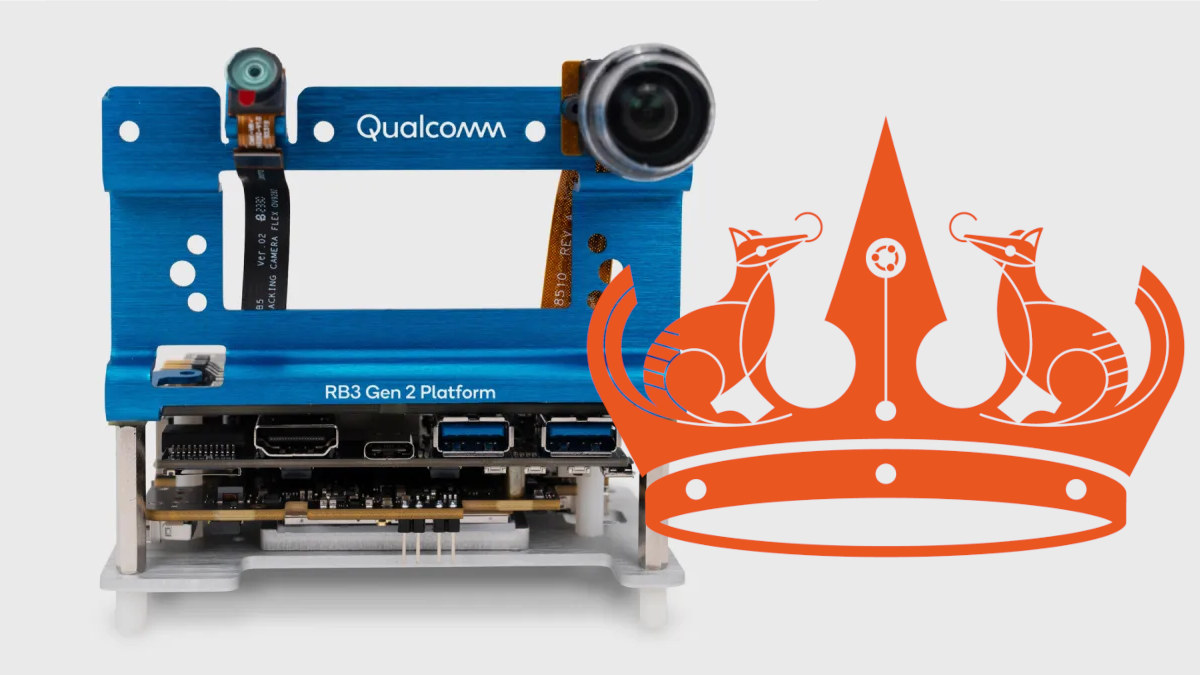The LinkPi ENC1Pro is a compact, high-performance 4Kp60 HDMI video encoder designed for professional live streaming and broadcasting applications. It supports two HDMI 2.0 inputs and outputs with resolutions up to 4K @ 60fps, and is equipped with a built-in Tally light for studio use. Powered by an unnamed quad-core Arm Cortex-A55 processor coupled with 4GB DDR4 RAM and 8GB eMMC flash, the device supports H.265 (HEVC), H.264, and MJPEG compression formats. It is compatible with various streaming protocols, including NDI HX (license required), RTSP, RTMP, SRT, HTTP, HLS, and ONVIF. Other features include real-time picture-in-picture, multi-view, watermarking, subtitles, audio mixing, and video recording in formats such as MP4, MOV, and MKV. The ENC1Pro also supports AAC, MP3, OPUS, and other audio codecs, and includes 3.5mm stereo audio I/O alongside HDMI audio. It also offers flexible network connectivity with Gigabit Ethernet, USB expansion for 4G/5G/Wi-Fi modules, and supports remote management […]
Linux 6.15 Release – Main changes, Arm, RISC-V and MIPS architectures
Linus Torvalds has just announced the release of Linux 6.15: So this was delayed by a couple of hours because of a last-minute bug report resulting in one new feature being disabled at the eleventh hour, but 6.15 is out there now. Apart from that final scramble, things looked pretty normal last week. Various random small fixes all over, with drivers as usual accounting for most of it. But we’ve got some bcachefs fixes, some core networking, and some mm fixes in there too. Nothing looks particularly scary. And this obviously means that the merge window opens tomorrow as usual, and I see the usual people being proactive and having sent me their pull requests. It’s memorial day tomorrow here in the US, but like the USPS, “neither snow nor rain nor heat nor gloom of night” – nor memorial day – stops the merge window. [ Actually, thinking back […]
Shuttle unveils Intel Twin Lake/Amston Lake IoT gateway and Mini PCs, Qualcomm Snapdragon X Plus / Elite AI mini PC at Computex 2025
Shuttle showcased a wide range of devices at Computex 2025, including the FTL1 IoT Edge Twin Lake/Amston Lake mini PC/gateway, the XPC Nano NE20N/NE10N Twin Lake/Alder Lake-N mini PCs, the XPC Nano AI Mini PC G1 powered by a Qualcomm Snapdragon X Plus / Elite Arm SoC, and the XPC Fanless DL40N/DL30N with Intel Twin Lake and Alder Lake-N processors, respectively. Shuttle FTL1 IoT Edge gateway FTL1 specifications: SoC (One or the other) Intel Processor N150 Twin Lake SoC with Intel UHD Graphics Intel Atom x7211RE Amston Lake SoC with Intel UHD Graphics System Memory – DDR5 4800 MT/s, up to 16 GB (note: It should be able to handle up to 64GB DDR5 memory) Storage – M.2 SATA or PCIe socket Video Output – HDMI up to 4096 x 2160 @ 60Hz) DisplayPort via USB Type-C Networking 2.5GbE RJ45 port (Intel controller), optional 2nd LAN port Optional WiFi and […]
ELTAY SC SBC is a Russian alternative to the Raspberry Pi based on Elvees SKIF “Scythian” quad-core Arm Cortex-A53 SoC
Elron ELTAY SC is a credit card-sized SBC powered by an Elvees SKIF “Scythian” quad-core Arm Cortex-A53 SoC that serves as an alternative to the Raspberry Pi, Orange Pi, Banana Pi, Radxa ROCK Pi, etc… for the Russian market. Getting SBCs in Russia has been more complicated in recent years due to sanctions, although it’s still possible to import Chinese SBCs directly and Raspberry Pi via the grey market. However, the ELTAY SC is meant to provide a more reliable source within Russia since the SBC is manufactured in a facility in Novosibirsk according to servernews.ru. ELTAY SC specifications: SoC – Elvees SKIF “Scythian” CPU – Quad-core Arm Cortex-A53 @ 2GHz GPU – Imagination PowerVR Series8XE VPU – Encode/decode up to two 4K video streams @ 60 Hz DSP – 2x DSP Process – 28 nm System Memory – 4GB LPDDR4 Storage 32GB eMMC flash microSD card slot Video and […]
Huawei Matebook Pro is the first laptop sold with HarmonyOS operating system
Huawei Matebook Pro (HAD-W24 / HAD-W32) resembles a typical laptop with a 14.2-inch display, 24GB to 32GB RAM, and 1TB or 2TB SSD storage. What’s less common is that the processor is not named, and the laptop is the first to run Huawei’s HarmonyOS operating system. Those two are due to Western countries’ sanctions against the Chinese company. Huawei used to sell Intel-based laptops with Windows and Android smartphones, but they’ve not made hardware based on US technology for a while. As software support would eventually run out, they had to work on an alternative named HarmonyOS, which has been used on smartwatches, smartphones, and tablets for a while, but the Matebook Pro is the first computer sold with the new OS. While we don’t know the processor used, reports mention the Kirin X90 10-core (4+4+2) / 20-thread Arm SoC as an “Apple Silicon” solution. MateBook Pro specifications: SoC – […]
Arm introduces new product naming architecture for infrastructure, PC, mobile, automotive, and IoT
We all know that Arm Cortex-A are application cores, Cortex-M microcontroller-class cores, and Cortex-R real-time cores used in various applications from IoT to automotive or architecture. But this may soon be thrown out of the window, as Rene Haas, Arm CEO, has published a short post entitled “The Arm Evolution: From IP to Platform for the AI Era” introducing a new product naming architecture with five categories: Arm Neoverse for infrastructure Arm Niva for PC Arm Lumex for mobile Arm Zena for automotive Arm Orbis for IoT While it’s not explicitly stated in the post, I assume that means the Cortex naming goes away because we’re told the Mali brand will continue as the GPU brand, and the Arm Neoverse N1, based on Cortex-A76, is an example where Cortex branding is not used anymore. So I understand, they just decided to apply similar naming to all the product lines, although […]
Allwinner T113-i industrial gateway supports Ethernet, WiFi, Bluetooth, 4G LTE, offers RS232, RS485, CAN Bus, DI/DO interfaces
MYiR Tech’s MY-EVC700S-V2 is an industrial gateway powered by Allwinner T113-i dual-core Cortex-A7 microprocessor (MPU), and equipped with up to 512MB DDR3, 4GB eMMC flash, and 32KB EEPROM. The fanless industrial-grade gateway offers RS232, RS485, CAN Bus, DO, and DI through terminal blocks, Fast Ethernet, WiFi, Bluetooth, and 4GB LTE connectivity, HDMI and LVDS display interfaces, a few USB ports, and more. MY-EVC700S-V2 specifications: SoC – Allwinner T113-i CPU Dual-core Arm Cortex-A7 clocked at up to 1.2 GHz 64-bit XuanTie C906 RISC-V real-time core DSP – HiFi4 VPU Video decoder – H.265 up to 4K @ 30 FPS, H.264 up to 4K @ 24 FPS, MPEG-1/2/4, JPEG, Xvid, Sorenson Spark up to 1080p60 Video encoder – JPEG/MJPEG up to 1080p60 Package – LFBGA 337 balls, 13 x 13 mm System Memory – 512MB DDR3 Storage 4GB eMMC flash 32KB EEPROM MicroSD card slot Display Interfaces LVDS-to-HDMI interface (optional) LVDS connector […]
Canonical releases Ubuntu 24.04 Desktop image for the Qualcomm DragonWing QCS6490 and QCS5430 processors
Canonical has just released a publicly available Ubuntu 24.04 Desktop beta image for the Qualcomm DragonWing QCS6490 and QCS5430 processors, and more specifically for the Qualcomm RB3 Gen 2 Vision Kit (QCS6490) and Qualcomm RB3 Gen 2 Lite Vision Kit (QCS5430). This adds to the existing Ubuntu 24.04 Server image for the Qualcomm vision kits, and Canonical says the unified image is currently designed for developers, ODMs/OEMs, and customers who want to evaluate the solution, and certified versions of Ubuntu 24.04 Desktop and Server images are coming soon with long term support and maintenance. Canonical explains the image enables the full Ubuntu Desktop experience at the edge with “powerful AI acceleration with high-performance graphics” (so I assume that means GPU and NPU are already supported), enhanced camera and multimedia capabilities, sensor integration, and various performance optimizations of the DragonWing family. So the way I read the announcement is that contrary […]


